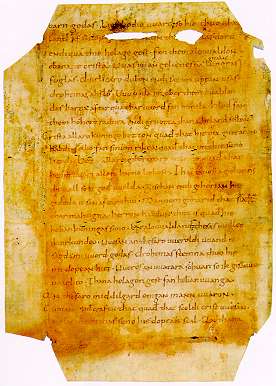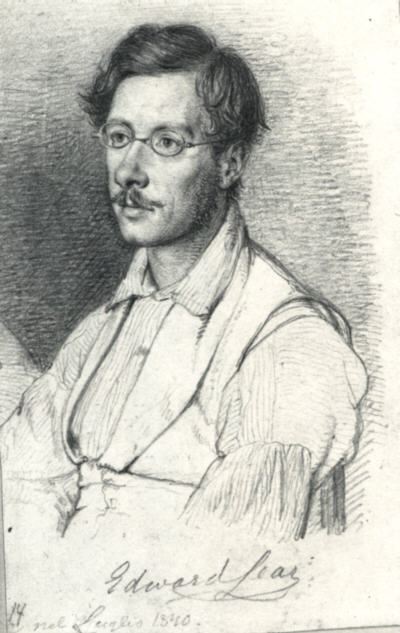|
Fitt (poetry)
In Old Saxon poetry, Old English poetry, and Middle English poetry, the term ''fit(t)'' (, Middle English ''fit(t)(e)'', ''fyt(t)(e)'', Old Saxon ''*fittia'') was used to denote a section (or canto) of a long narrative poem, and the term (spelled both as ''fitt'' and ''fit'') is still used in modern scholarship to refer to these (though in Old and Middle English the term seems actually to have been used more often to mean 'poem, song'). The term appears in the Latin preface to the Old Saxon '' Heliand'' in the form ''vitteas'', and its usage in line 709 of Geoffrey Chaucer's tale of "Sir Thopas "Sir Thopas" is one of ''The Canterbury Tales'' by Geoffrey Chaucer, published in 1387. The tale is one of two—together with The Tale of Melibee—told by the fictive Geoffrey Chaucer as he travels with the pilgrims on the journey to Canterbury ..." has attracted particular commentary, since here the poem's narrator (a fictionalised representation of Geoffrey Chaucer himself) comments expl ... [...More Info...] [...Related Items...] OR: [Wikipedia] [Google] [Baidu] |
Old Saxon Poetry
Old Saxon (), also known as Old Low German (), was a Germanic language and the earliest recorded form of Low German (spoken nowadays in Northern Germany, the northeastern Netherlands, southern Denmark, the Americas and parts of Eastern Europe). It is a West Germanic language, closely related to the Anglo-Frisian languages. It is documented from the 8th century until the 12th century, when it gradually evolved into Middle Low German. It was spoken throughout modern northwestern Germany, primarily in the coastal regions and in the eastern Netherlands by Saxons, a Germanic tribe that inhabited the region of Saxony. It partially shares Anglo-Frisian's (Old Frisian, Old English) Ingvaeonic nasal spirant law which sets it apart from Low Franconian and Irminonic languages, such as Dutch, Luxembourgish and German. The grammar of Old Saxon was fully inflected with five grammatical cases (nominative, accusative, genitive, dative, and instrumental), three grammatical numbers ... [...More Info...] [...Related Items...] OR: [Wikipedia] [Google] [Baidu] |
Old English Poetry
Old English literature refers to poetry (alliterative verse) and prose written in Old English in early medieval England, from the 7th century to the decades after the Norman conquest of England, Norman Conquest of 1066, a period often termed Anglo-Saxon England. The 7th-century work ''Cædmon's Hymn'' is often considered as the oldest surviving poem in English, as it appears in an 8th-century copy of Bede's text, the ''Ecclesiastical History of the English People''. Poetry written in the mid 12th century represents some of the latest post-Norman examples of Old English. Adherence to the grammatical rules of Old English is largely inconsistent in 12th-century work, and by the 13th century the grammar and syntax of Old English had almost completely deteriorated, giving way to the much larger Middle English literature, Middle English corpus of literature. In descending order of quantity, Old English literature consists of: sermons and saints' lives; biblical translations; translat ... [...More Info...] [...Related Items...] OR: [Wikipedia] [Google] [Baidu] |
Middle English
Middle English (abbreviated to ME) is a form of the English language that was spoken after the Norman Conquest of 1066, until the late 15th century. The English language underwent distinct variations and developments following the Old English period. Scholarly opinion varies, but the University of Valencia states the period when Middle English was spoken as being from 1150 to 1500. This stage of the development of the English language roughly coincided with the High Middle Ages, High and Late Middle Ages. Middle English saw significant changes to its vocabulary, grammar, pronunciation, and orthography. Writing conventions during the Middle English period varied widely. Examples of writing from this period that have survived show extensive regional variation. The more standardized Old English literary variety broke down and writing in English became fragmented and localized and was, for the most part, being improvised. By the end of the period (about 1470), and aided by the movabl ... [...More Info...] [...Related Items...] OR: [Wikipedia] [Google] [Baidu] |
Canto
The canto () is a principal form of division in medieval and modern long poetry. Etymology and equivalent terms The word ''canto'' is derived from the Italian word for "song" or "singing", which comes from the Latin ''cantus'', "song", from the infinitive verb ''canere'', "to sing"."Canto" ''The Merriam-Webster Dictionary''. Retrieved 27 September 2015. In , , and poetry, the term '' [...More Info...] [...Related Items...] OR: [Wikipedia] [Google] [Baidu] |
Old Saxon Language
Old Saxon (), also known as Old Low German (), was a Germanic language and the earliest recorded form of Low German (spoken nowadays in Northern Germany, the northeastern Netherlands, southern Denmark, the Americas and parts of Eastern Europe). It is a West Germanic language, closely related to the Anglo-Frisian languages. It is documented from the 8th century until the 12th century, when it gradually evolved into Middle Low German. It was spoken throughout modern northwestern Germany, primarily in the coastal regions and in the eastern Netherlands by Saxons, a Germanic tribe that inhabited the region of Saxony. It partially shares Anglo-Frisian's (Old Frisian, Old English) Ingvaeonic nasal spirant law which sets it apart from Low Franconian and Irminonic languages, such as Dutch, Luxembourgish and German. The grammar of Old Saxon was fully inflected with five grammatical cases (nominative, accusative, genitive, dative, and instrumental), three grammatical numbers (singu ... [...More Info...] [...Related Items...] OR: [Wikipedia] [Google] [Baidu] |
Heliand
The ''Heliand'' () is an epic alliterative verse poem in Old Saxon, written in the first half of the 9th century. The title means "savior" in Old Saxon (cf. German and Dutch ''Heiland'' meaning "savior"), and the poem is a Biblical paraphrase that recounts the life of Jesus in the alliterative verse style of a Germanic epic. ''Heliand'' is the largest known work of written Old Saxon. The poem must have been relatively popular and widespread because it exists in two manuscript versions and four fragmentary versions. It takes up about 6,000 lines. A '' praefatio'' exists, which could have been commissioned by either Louis the Pious (king from 814 to 840) or Louis the German (806–876). This ''praefatio'' was first printed by Matthias Flacius in 1562, and while it has no authority in the manuscripts it is generally deemed to be authentic. The first mention of the poem itself in modern times occurred when Franciscus Junius (the younger) transcribed a fragment in 1587.Kees Dekker, ... [...More Info...] [...Related Items...] OR: [Wikipedia] [Google] [Baidu] |
Geoffrey Chaucer
Geoffrey Chaucer ( ; – 25 October 1400) was an English poet, author, and civil servant best known for ''The Canterbury Tales''. He has been called the "father of English literature", or, alternatively, the "father of English poetry". He was the first writer to be buried in what has since come to be called Poets' Corner, in Westminster Abbey. Chaucer also gained fame as a philosopher and astronomer, composing the scientific ''A Treatise on the Astrolabe'' for his 10-year-old son, Lewis. He maintained a career in public service as a bureaucrat, courtier, diplomat, and member of parliament, having been elected as Knight of the shire, shire knight for Kent. Among Chaucer's many other works are ''The Book of the Duchess'', ''The House of Fame'', ''The Legend of Good Women'', ''Troilus and Criseyde'', and ''Parlement of Foules''. He is seen as crucial in legitimising the literary use of Middle English when the dominant literary languages in England were still Anglo-Norman Fren ... [...More Info...] [...Related Items...] OR: [Wikipedia] [Google] [Baidu] |
Sir Thopas
"Sir Thopas" is one of ''The Canterbury Tales'' by Geoffrey Chaucer, published in 1387. The tale is one of two—together with The Tale of Melibee—told by the fictive Geoffrey Chaucer as he travels with the pilgrims on the journey to Canterbury Cathedral. The tale concerns the adventures of the knight Sir Thopas and his quest to win the elf-queen. Frame The tale is one of two told by the fictive Chaucer, along with The Tale of Melibee, who figures as one of the pilgrims who are on a journey to the shrine of Thomas Becket in Canterbury Cathedral. The pilgrims are involved in a story-telling contest at the behest of the Host (Middle English: ''Hooste''), Harry Bailly, the winner of which will receive a free meal at The Tabard Inn on their return. ''Sir Thopas'' comes after '' The Prioress's Tale'', a poem which is exemplary of the ''miracle of the Virgin'' genre and which tells the story of a child martyr killed by Jews. Seemingly wishing to counter the sombre mood that this ta ... [...More Info...] [...Related Items...] OR: [Wikipedia] [Google] [Baidu] |
John Burrow (literary Scholar)
John Anthony Burrow, Fellow of the British Academy, FBA (3 August 1932 – 22 October 2017) was a British scholar of English literature. He was Winterstoke Professor of English at the University of Bristol from 1976 to 1998 and Dean of its Faculty of Arts from 1990 to 1993. The only child of an accountant and a teacher, Burrow was born and raised in Loughton, Essex. He matriculated at Christ Church, Oxford in 1950 to read English. After lecturing at King's College, London and for various Oxford colleges, he was elected a fellow of Jesus College, Oxford in 1961. In 1976, he moved to the University of Bristol, where he remained until his retirement in 1998. Burrow was married to the novelist Diana Wynne Jones. Sources * https://www.thebritishacademy.ac.uk/documents/955/Memoirs_18-04-Burrow_0.pdf * https://www.oxfordmail.co.uk/news/15633223.obituary-literary-scholar-prof-john-burrow/ * * * {{DEFAULTSORT:Burrow, John 1932 births 2017 deaths Fellows of the British Academy P ... [...More Info...] [...Related Items...] OR: [Wikipedia] [Google] [Baidu] |
Poetic Devices
Poetic devices are a form of literary device used in poetry. Poems are created out of poetic devices via a composite of: structural, grammatical, rhythmic, metrical, verbal, and visual elements. They are essential tools that a poet uses to create rhythm, enhance a poem's meaning, or intensify a mood or feeling. Poetic diction Poetic Diction is a style of writing in poetry which encompasses vocabulary, phrasing, and grammatical usage. Along with syntax, poetic diction functions in the setting the tone, mood, and atmosphere of a poem to convey the poet's intention. Poetic devices shape a poem and its meanings. Types of poetic dictions Sound Poetic devices that have a sonic quality achieve specific effects when heard. Words with a sound-like quality can strike readers as soothing or dissonant while evoking certain thoughts and feelings associated with them. * Alliteration–Repeated consonant sounds at the beginning of words placed near each other, usually on the same or ... [...More Info...] [...Related Items...] OR: [Wikipedia] [Google] [Baidu] |
Medieval Poetry
Poetry took numerous forms in medieval Europe, for example, lyric and epic poetry. The troubadours, trouvères, and the minnesänger are known for composing their lyric poetry about courtly love usually accompanied by an instrument. Among the most famous of secular poetry is '' Carmina Burana'', a manuscript collection of 254 poems. Twenty-four poems of ''Carmina Burana'' were later set to music by German composer Carl Orff in 1936. Examples of medieval poetry Old English religious poetry includes the poem ''Christ'' by Cynewulf and the poem '' The Dream of the Rood'', preserved in both manuscript form and on the Ruthwell Cross. We do have some secular poetry; in fact a great deal of medieval literature was written in verse, including the Old English epic ''Beowulf''. Scholars are fairly sure, based on a few fragments and on references in historic texts, that much lost secular poetry was set to music, and was spread by traveling minstrels, or bards, across Europe. Thus, the fe ... [...More Info...] [...Related Items...] OR: [Wikipedia] [Google] [Baidu] |




